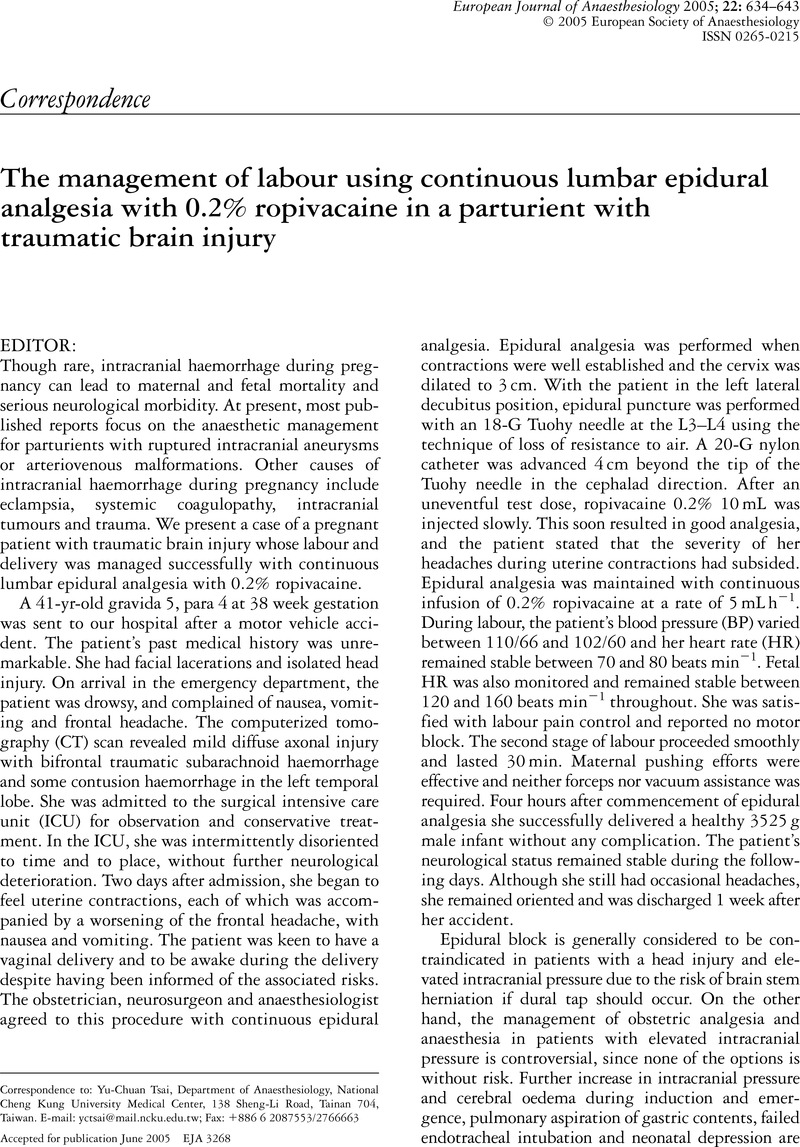Crossref Citations
This article has been cited by the following publications. This list is generated based on data provided by Crossref.
Wang, Lars Peter
and
Paech, Michael James
2008.
Neuroanesthesia for the Pregnant Woman.
Anesthesia & Analgesia,
Vol. 107,
Issue. 1,
p.
193.
Zabolotskikh, Igor
and
Trembach, Nikita
2015.
Safety and efficacy of combined epidural/general anesthesia during major abdominal surgery in patients with increased intracranial pressure: a cohort study.
BMC Anesthesiology,
Vol. 15,
Issue. 1,
Trembach, N. V.
2017.
Anesthesia in Patients with Concomitant Diseases of the Central Nervous System: a Literature Review.
Annals of Critical Care,
p.
19.
Satirlar, Zerrin Ozkose
and
Inan, Gozde
2018.
Obstetric Anesthesia for Co-morbid Conditions.
p.
99.
Leach, Matthew R.
and
Zammit, Christopher G.
2020.
Neurology and Pregnancy: Neuro-Obstetric Disorders.
Vol. 172,
Issue. ,
p.
51.
Kabi, Ankita
Tandon, Shipra
and
Kandy, Priya T
2021.
Extradural Anesthesia in a Case of Mild Head Injury.
Cureus,
Heller, Carina
Kraft, Mathilda
Martinez, Margaret
Mirmajlesi, Anya S.
Janecka, Magdalena
McCormack, Clare
Thomason, Moriah E.
Weiss, Thomas
and
Arciniega, Hector
2025.
Complications After Maternal Traumatic Brain Injury During Pregnancy.
JAMA Network Open,
Vol. 8,
Issue. 2,
p.
e2459877.



